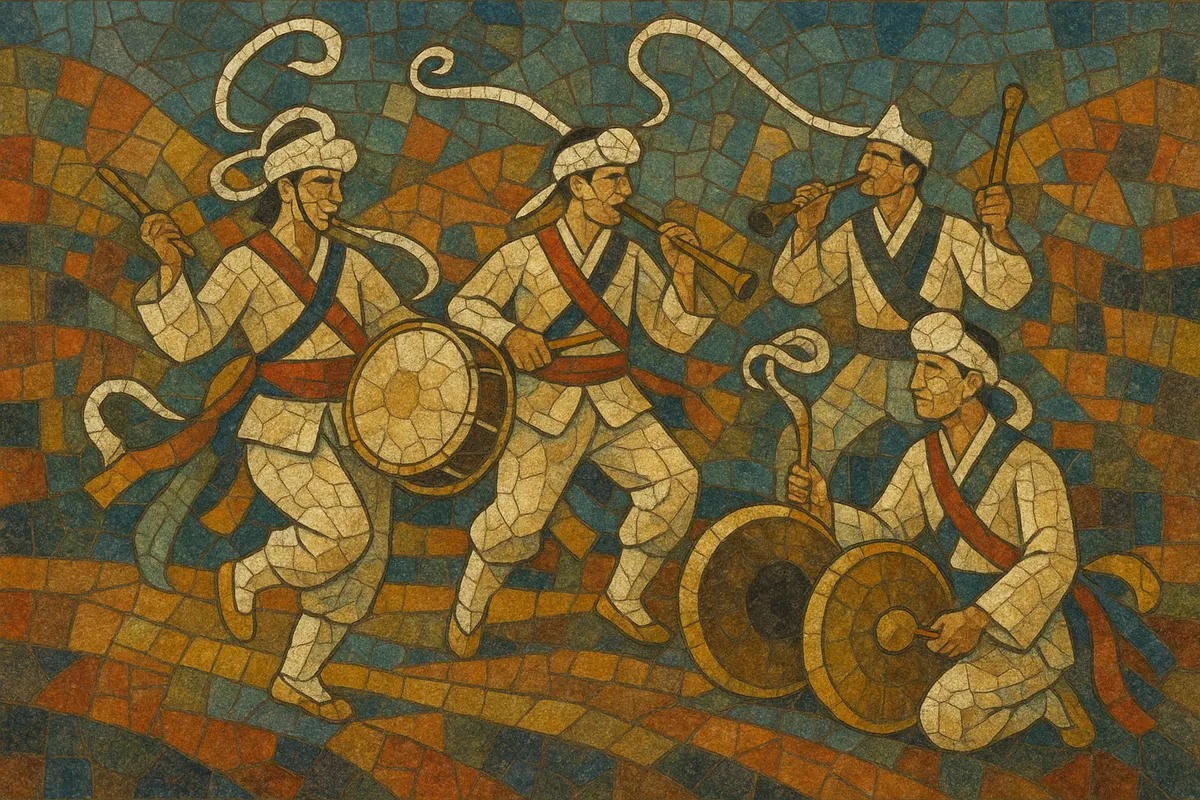Pungmul (also called nongak) is a traditional Korean community band music that blends driving percussion, shawm melodies, dance, and call-and-response singing. It was historically performed outdoors by farming villages during agricultural work, seasonal festivals, and communal rituals.
The ensemble is led by the kkwaenggwari (small hand gong) and anchored by the jing (large gong), buk (barrel drum), and janggu (hourglass drum), often joined by taepyeongso (Korean shawm), sogo (small hand drum), and sometimes nabal (long trumpet). Performers dance in swirling formations, frequently wearing ribboned hats (sangmo) whose spinning becomes part of the choreography.
Rather than harmony, pungmul emphasizes cyclical rhythmic patterns (jangdan), layered textures, and collective energy. It is festive, participatory music meant to animate public space—parading through streets (gilnori) or gathering in a field (madang) for an ecstatic, ritual-like finale (p’an-gut).
Pungmul’s roots lie in premodern Korean village life, where music, drumming, and dance accompanied rice cultivation, communal labor, and local rites. Its core functions were to coordinate work, bind communities, and invoke blessings for good harvests. Over the late Joseon period (18th–19th centuries), distinctive local styles and repertoires coalesced, with itinerant troupes (including the famed Namsadang) helping spread and shape the art.
By the 19th century, the hallmark four-percussion core—kkwaenggwari, jing, buk, janggu—was established, often augmented by taepyeongso. Regional idioms developed (e.g., Imsil Pilbong, Pyeongtaek, Gangneung, Jeongeup), each with characteristic rhythms, choreography, and staging. Performances moved between parading (gilnori), seated playing (jwajipnori), and climactic ritual play (p’an-gut), mixing dance, acrobatics, and vocal interjections.
During the 20th century, urbanization and modernization reduced the everyday agricultural context for pungmul. Yet preservation societies, university student troupes, and cultural policy kept the tradition alive. In 1978, the concert ensemble SamulNori re-staged village percussion for theaters, accelerating global awareness while inspiring debate about tradition versus modernization.
Today, pungmul lives in festivals, parades, education, and staged works. UNESCO inscribed "Nongak, community band music, dance and rituals" in 2014, recognizing its cultural value. Contemporary artists combine pungmul instrumentation and rhythms with new staging, multimedia, and cross-genre collaborations, while local preservation troupes sustain regional lineages.


